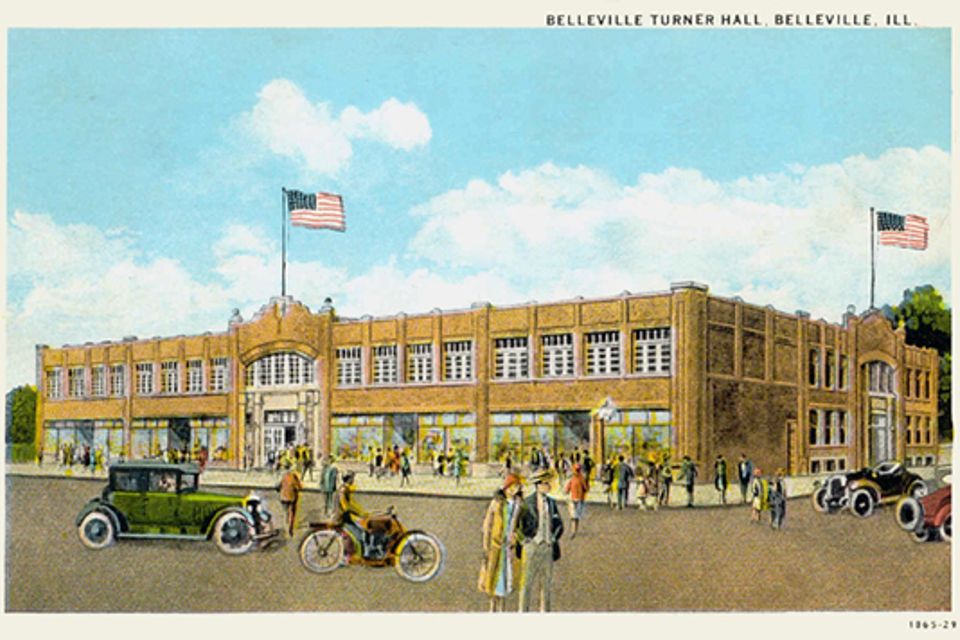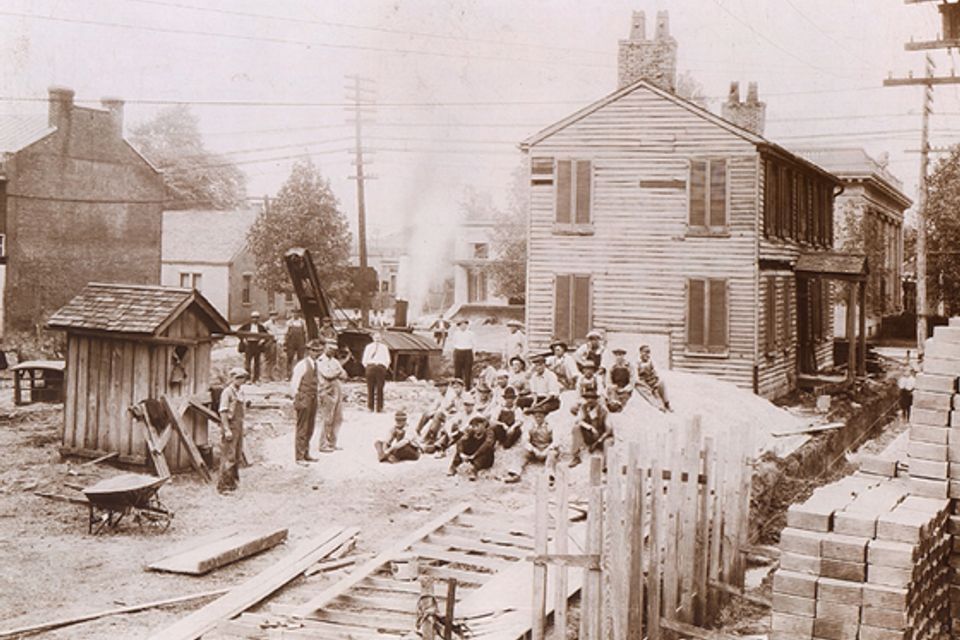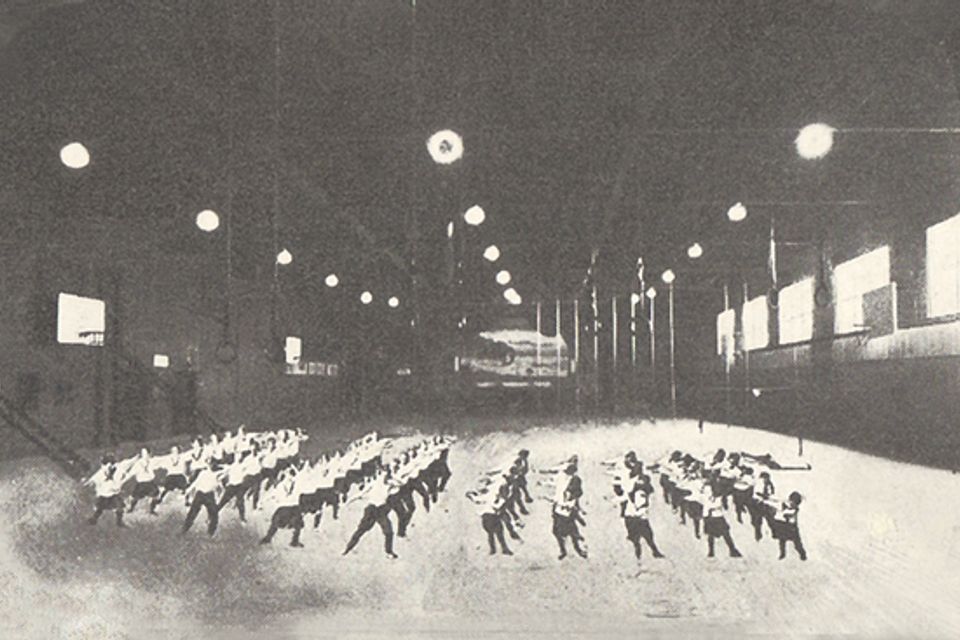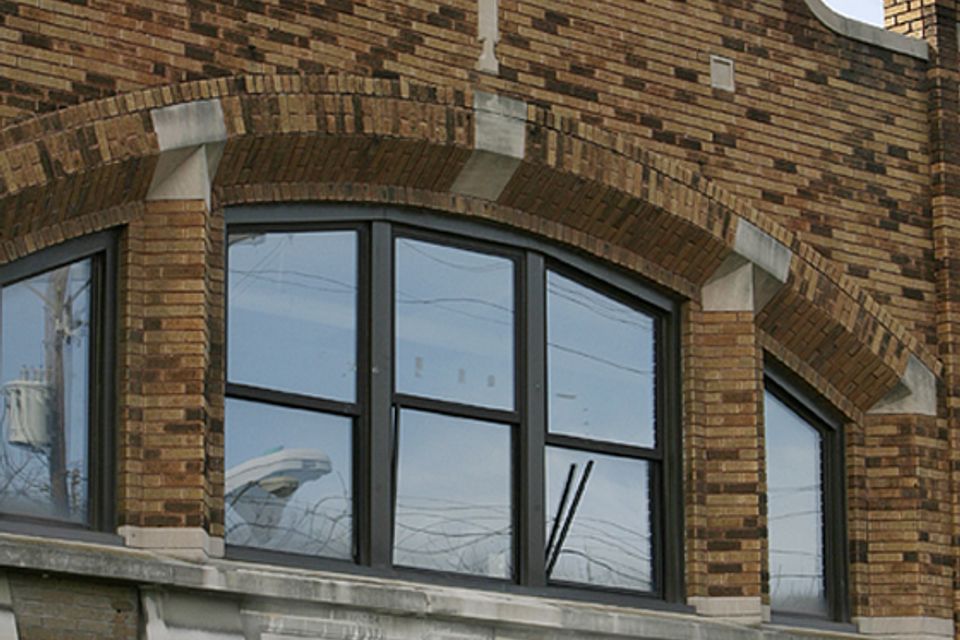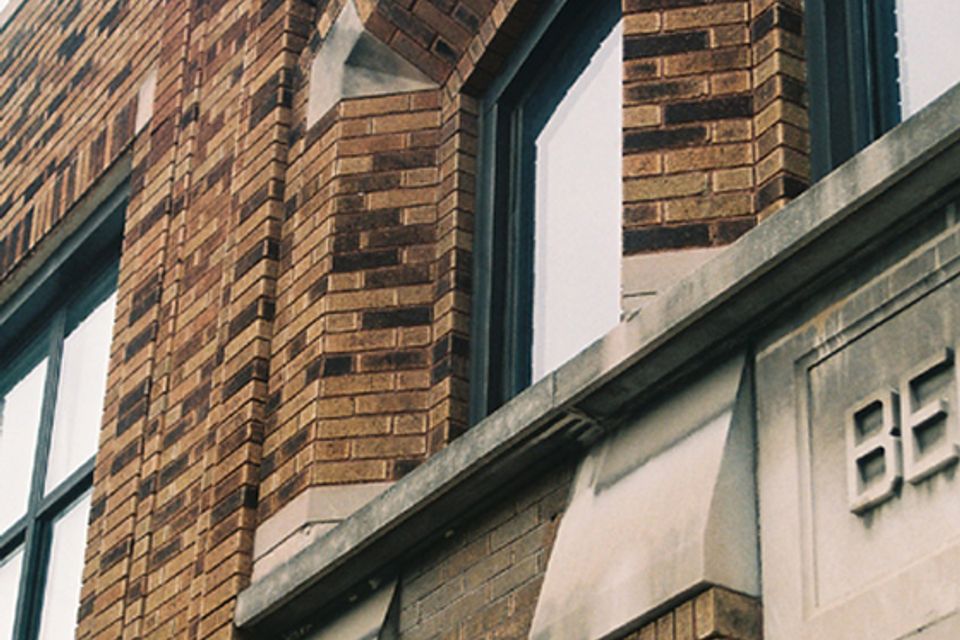TURNER HALL
Table of Contents
Introduction
Origins of the Turners
Turner Hall: Gym, Social Center, Armory
Turner Hall: Belleville Recreation Board Venue and YMCA Home
Photo Gallery
Origins of the Turners
Turner Hall: Gym, Social Center, Armory
Turner Hall: Belleville Recreation Board Venue and YMCA Home
Photo Gallery
________________________________________________________________________________________________
Introduction
On a warm June day in 1924 upwards of 2,000 people turned out for the dedication of the Turners’ new hall in Belleville, Illinois, east of St. Louis, Missouri. Press coverage marveled at the scale of the building—it housed the largest Turner gym in the United States. The newspaper remarked about the speed with which the facility had been constructed and noted the quality of the workmanship. In 2009 dollars, it was a $1.5 million project.
Who were these Turners?
Who were these Turners?
Origins of the Turners
The Turnverein movement arrived in Belleville in 1852. The Turners of Belleville traced their origins to the Turnverein [gymnastics association] movement organized in Prussia in 1811 to promote physical fitness. The motto of the movement was “a sound mind in a sound body.” Gymnastics formed the core of physical training. The Turnverein also had a political agenda of national unity and constitutional government. It spread throughout the German states, drawing support from university students, among them Gustav Koerner. The Turners’ political ideals brought them into conflict with German rulers. Their participation in the Revolutions of 1848 forced many into exile when the rebellions were quashed. A number of Turners came to the United States, bringing with them their fervor for democratic ideals and physical training. Many became ardent opponents of slavery, dedicated supporters of the federal union, and devoted followers of Abraham Lincoln. Symbolic of their stance on the political issues of the Civil War era, Turners furnished a military unit that guarded Lincoln during his inauguration in 1861.
In 1899, Henry Raab organized the most successful of the local Turnvereins, the Belleville Turners. In 1925 this group had the second largest membership in the American Turners’ federation; in proportion to Belleville’s total population, the Belleville Turners formed the largest society. The local Turners were instrumental in promoting physical education in Belleville’s public schools: the first physical education instructors in the schools came from the Turners.
Turner Hall: Gym, Social Center, Armory
Turner Hall was conceived during a period of optimism in Belleville, and the hall’s Art Deco architecture looked to the future and complemented the industrial age. In conformity with most of Belleville’s buildings, the major building material was brick. The architect was Julius Floto, who had worked for Frank Lloyd Wright in the construction of the Imperial Hotel, which long was the premier hotel in Tokyo, Japan.
The core fitness function of the Turners was addressed by the new hall’s gymnasium. A dance hall, meeting room, dining and cooking facilities, and the gym, which could be converted into an auditorium capable of seating 2,200 people, gave physical expression to the Belleville Turners’ motto, “Not for Ourselves, but for Others”: the builders envisioned the hall to be a community meeting center. Turner Hall became a gathering place for civic groups. It was as well a home to social activities, such as dances accompanied by live orchestras, card playing, and bowling. To help fund the hall, the building committee had constructed four commercial spaces on the first floor that hosted a number of businesses over the decades.
What the building committee had not envisioned was a military role for the hall. With threat of American entry into World War II looming, the state government created the Illinois Reserve Militia to provide home defense and disaster response. Company D, 4th Infantry organized at Belleville as a unit of the new militia and used Turner Hall as its armory from 1941 until 1947, when the newly activated Battery B of the 209th Artillery Battalion, 44th Division of the Illinois National Guard operated from the hall. The hall remained an armory until after the battery was inducted into federal service in 1952 and deployed in preparation for service in the Korean Conflict.
Turner Hall: Belleville Recreation Board Venue and YMCA Home
While the military occupied much of the hall, the Belleville Turners continued their physical fitness and recreational programs, but on a dwindling basis. By the early 1950’s, they were ready to relinquish their mission. In 1954, the Turners negotiated a long-term lease with the City of Belleville’s Playground and Recreation Board.
Even with the city’s commitment to a fitness program, some still perceived a void where once the Turners had played a vital role in the community. In 1959, consequently, local businessmen organized the Belleville Family Young Men’s Christian Association to buy the hall. Negotiations were cordial. Although the hall had been valued at $600,000, the Belleville Turners, in accord with their motto, sold the hall to the YMCA for just $100,000. The Turners then faded away, while the YMCA continued to use the hall until 2006, when it moved to a new facility, leaving the building vacant and subject to the elements. The city of Belleville has acquired the building and is evaluating its future.
Photo Gallery

